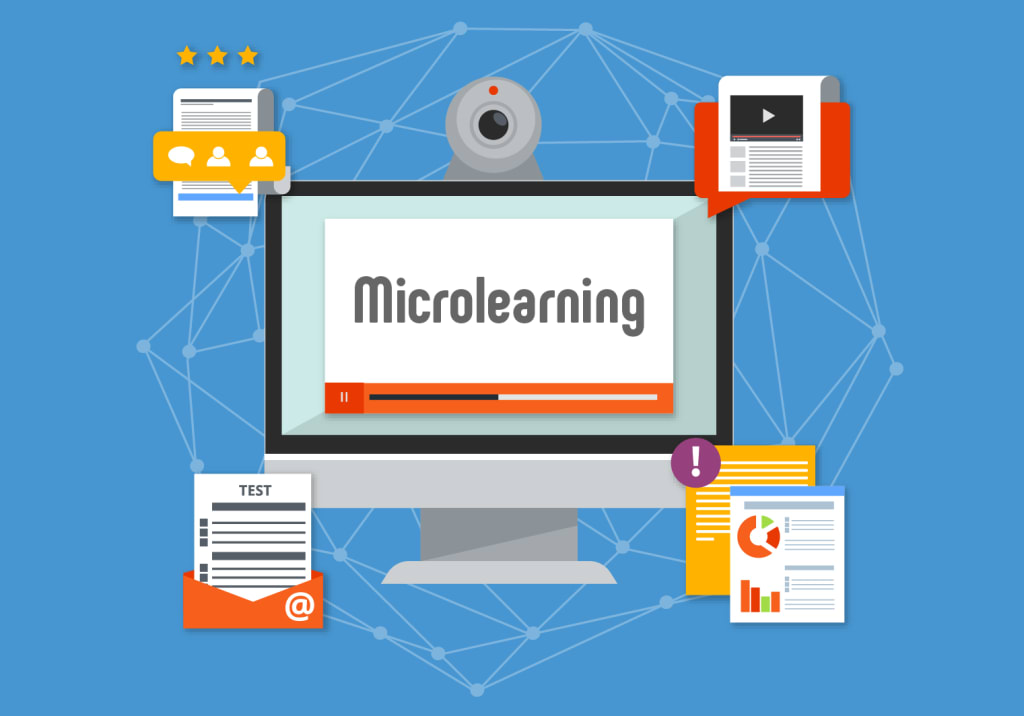How to create microlearning?
Creating microlearning detection is a challenging task.

In the myths of education, in order to develop a micro-style course, it is not enough to cut the content into small pieces. Micro-courses are usually practically applicable. So, you can discover how to use new findings, or write an email in some format.
If you simply create a business writing course, the employee will have to dig into it for a long time to learn how to write letters in the way that is customary in the company. This will take his time and may adversely affect the results.
Therefore, the use of microlearning allows you to more effectively achieve goals. How to do it?
One lesson - one skill
One lesson should cover one skill. You can't just take a long lesson on journaling and break it down into several smaller ones, calling it a micro-course. You need to rethink the content and create a micro-course around it.
In addition, all lessons must be linked into one course. For example, you might want to create a series of tutorials as you work through technical support. A lesson on how to keep a log of the actions performed and apply solutions to be executed from chains. But it will be almost useless if there is no lesson on standard solutions and answers to specific questions. With the help of custom lms development, you can take a course where all lessons must be completed in a strictly strict order. This will help to make sure that students go from simple to complex, and gradually master the information necessary for work. And they don’t just go from lesson to lesson without seeing or understanding the connection.
Set goals
Decide:
- What is the successful completion of the micro-course?
- What should the student learn?
- What skills to master?
- If this is about employee training, then what are the business goals of the micro-course?
The business goal could be to increase the motivation of newcomers during onboarding or to improve the cold-calling technique of salespeople.
What is the purpose of the application?
For example, to help employees better understand the company's business processes. Or increase KPI from cold calls.
What is the purpose of learning?
The employee better understands business processes and their place in them. Or an employee’s conversion from cold sales increases before the deals are closed.
Limit content
Avoid adding non-essential information that will simply drag out the lesson for more time. If you still want to add some additional information, just give a link in the lesson "For the deeper study" and let the students decide for themselves whether they need it or not.
Remember that one micro-course should ideally be no longer than 5-10 minutes. Consider the total time when creating lessons. Typically, micro-courses are used by employees or clients who are ALREADY working for the company or product and want to get the information they need quickly.
More practice in micro courses
As we have already said, the purpose of the micro-course is to give a quick answer for practical application. In our opinion, short videos with a practical demonstration are best suited for this. It is known that 59% of executives prefer to watch a video rather than read a text if given a choice.
Adapt learning for mobile devices
Remember that one of the main advantages of microlearning is that it allows you to take courses at a convenient time and in a convenient place: on the subway on your way to work, in line, during a coffee break, or while lying on the couch during a commercial break. Use open source lms, they have out-of-the-box adaptations for all kinds of devices.
Conclusions
Microlearning is a way to help employees solve their day-to-day work tasks in the field. When an employee encounters a problem, he can take a thematic course on the topic on his mobile phone and deal with it in a jiffy.





Comments
There are no comments for this story
Be the first to respond and start the conversation.